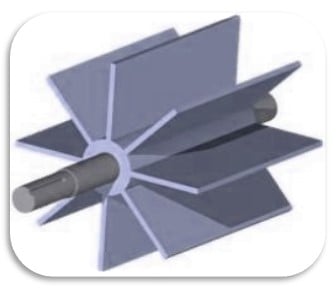When you have a combustible dust, not only does your dust collector require to be protected against a deflagration, but the airlock must contain the event. NFPA-69 allows the use of a rotary valve as long as the following:
- Deflagration isolation by flame quenching (close-clearance valves) or
- Deflagration isolation by material blocking (product layer above the valve)
Most rotary valves use flame quenching to achieve compliance with the spec. Basically this requires the valve to have a clearance to the housing no greater than 0.2 mm and have at least six vanes, so that two vanes are isolating the event at all times.
Many rotary valves manufacturers comply with these specifications. When you are looking at a rotary valve for you combustible dust application, remember to confirm that the valve complies with NFPA-69.
If you are having operational issues on your dust collection system, contact Aerodyne at 440-543-7400 or dc@dustcollectorhq.com. He is available to help you problem solve your dust collection issues.

